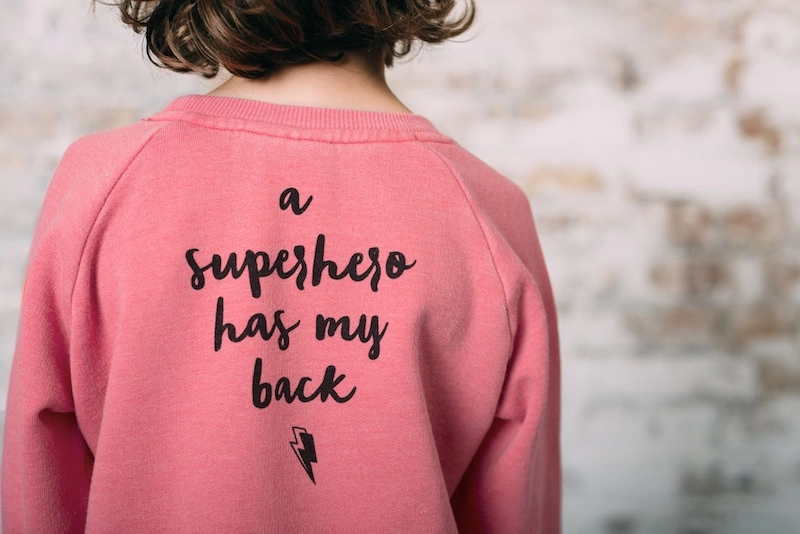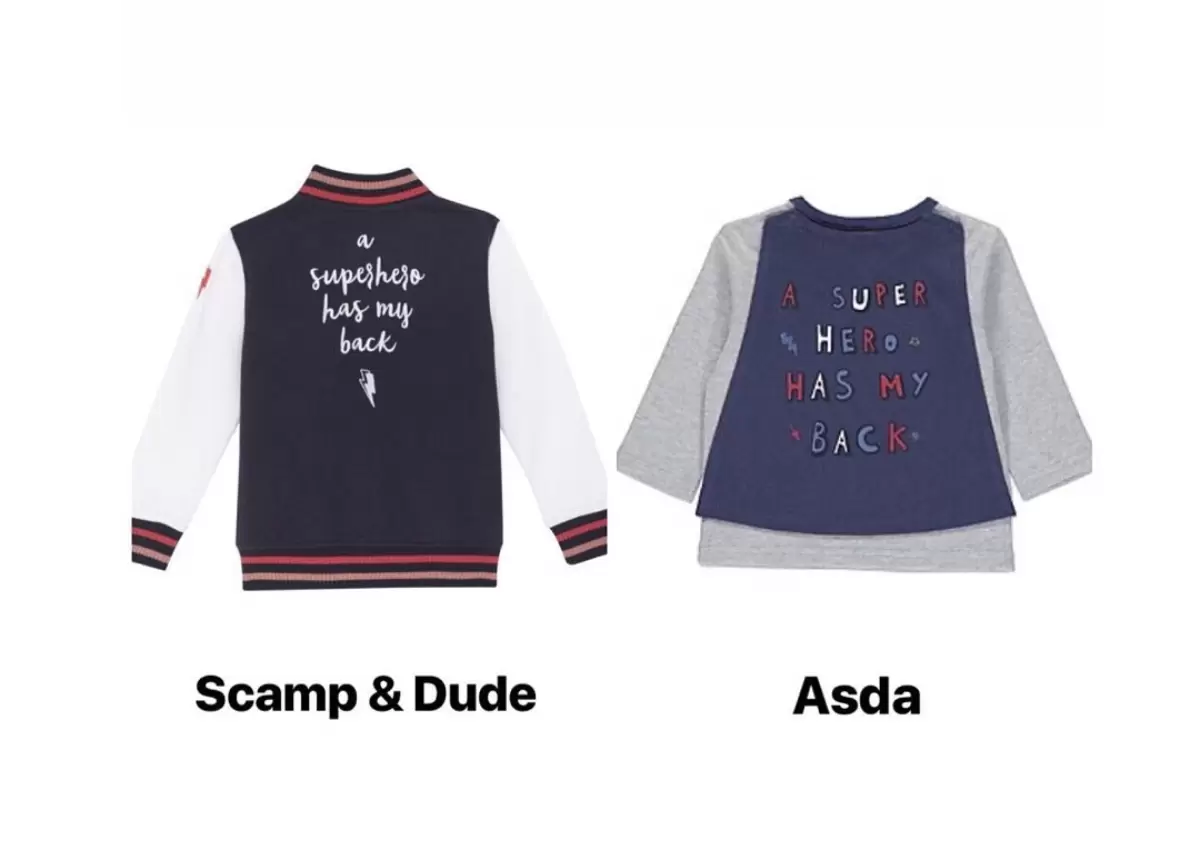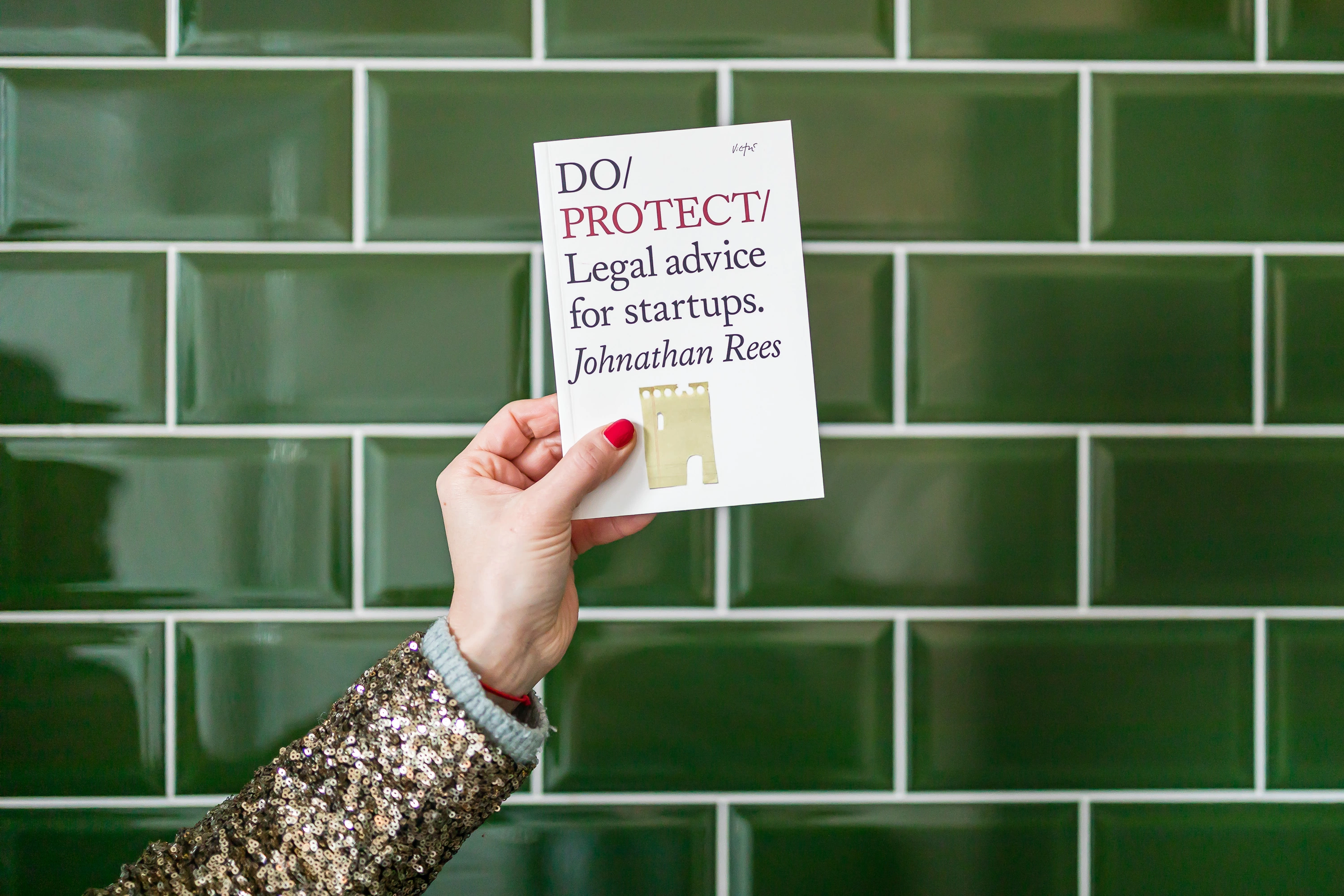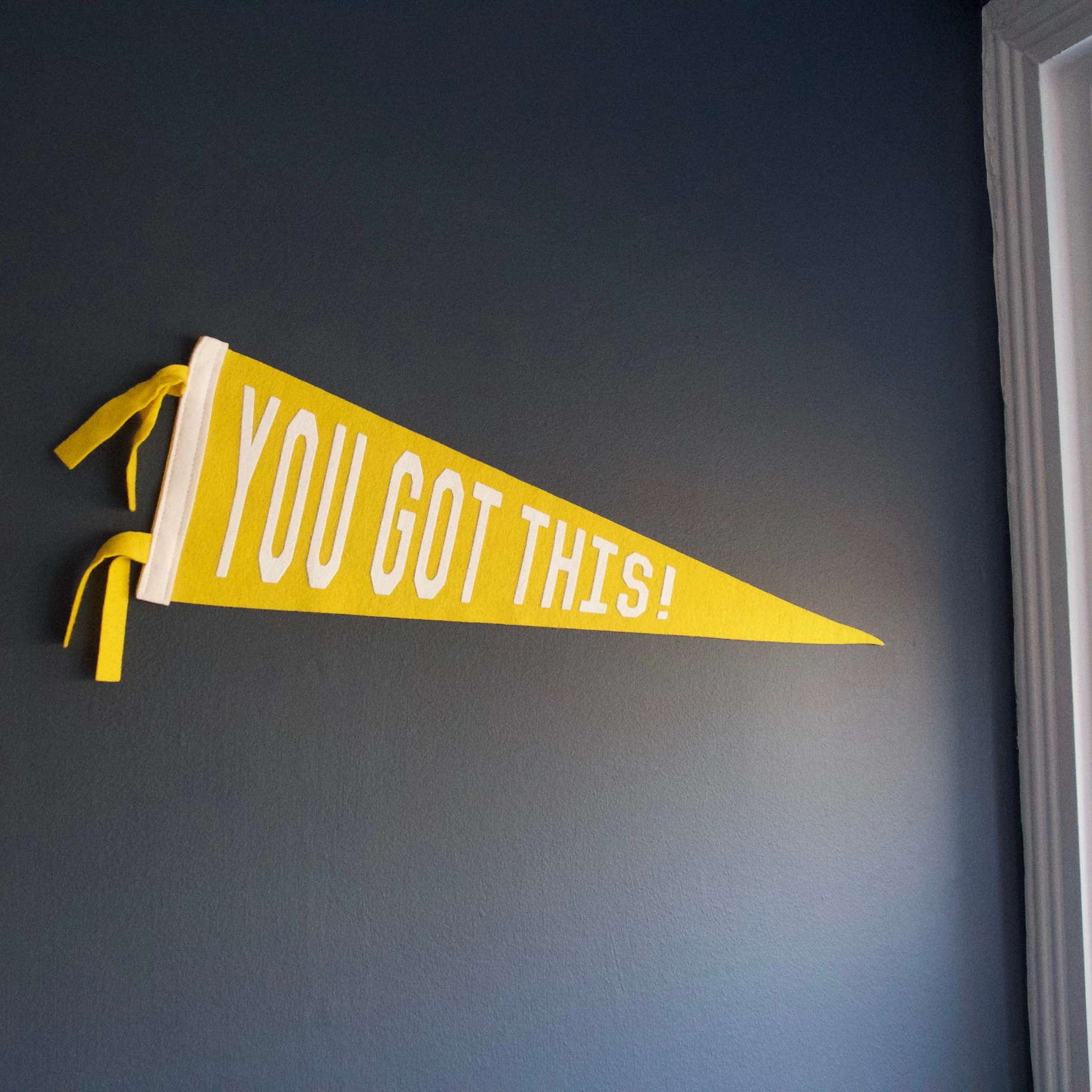Need it for Christmas? Check delivery times

How do I protect my designs from being copied?
Finance, legal & tech
With Jo Tutchener-Sharp, founder of Scamp and Dude
UPDATED 4TH SEPTEMBER 2023
“What can I do if my design gets copied?” is sadly a question asked all too often, as well as, “How can I protect my designs from being copied?” Jo Tutchener-Sharp, founder of Scamp and Dude, shares her experience along with expert advice…

Is it illegal to copy someone’s design or work?
Copying is theft. You can't copy or use copyrighted material without permission. The difficulty is proving when someone has. Having your designs copied or facing IP (Intellectual Property) issues are one of the worst things that can happen to a small business, especially when a big brand takes their design and creates a lesser product that gets mass attention at speed. It’s unethical, it’s a huge betrayal of trust and it can destroy the person who created it if they don’t have the means to fight it. However, there are many things you can do to protect yourself against this happening in the first place and practical ways to handle it if it does.
Jo Tutchener-Sharp, founder of Scamp and Dude (do listen to her brilliant Conversations of Inspiration podcast episode), has experience of this, having had her kidswear designs copied by two huge brands, causing uproar in the small business community — but she took them on, and won. She truly is a shining beacon for small businesses everywhere, as a founder who knows her worth.
Our founder Holly Tucker spoke to Jo about her experience, and also sought the professional advice of lawyer and IP expert Oliver Fairhurst, as she called on him to share his top tips on protecting your work.
Copying is theft. You can't copy or use copyrighted material without permission. The difficulty is proving when someone has.
The devastating effects of being copied
Sadly, Jo isn’t the first person to have had her designs copied, nor will she be the last. IP theft is particularly rife in the fashion environment, with supermarkets and big online retailers being the worst culprits.
Perhaps they don’t realise they’ve created an exact copy until it’s called out but, regardless of the final outcome, the damage it causes can’t be undone. They take your hard work and produce a copy that means little to them, but is your life’s work, which subsequently, takes your time, energy and money to fight, meaning the growth of your business is put on hold.
It’s not just corporates who are guilty of copying but small businesses too
Unfortunately, there are also cases of small businesses ripping off other small businesses and, whilst the big brands doing it hurts, a fellow small business doing it cuts deep. Small businesses and founders are a community. Together we’re stronger and can stand behind one another when needed, protecting and championing one another. Jo has experience of this herself, telling us, “It’s so upsetting to see a small brand doing it, and there needs to be more legislation when it comes to what you can and can’t do, and if it happens to you — what you do then.” So what did Jo do?
Jo Tutchener-Sharp’s story: how to beat the copycats
When Jo’s A Superhero Has My Back design was replicated by a large supermarket chain, she found it incredibly difficult to deal with. “I think when it first happens, it really is like being stabbed in the heart, because you’ve done all that work, and your heart and soul has gone into it,” she told us. “Then, when you see a big brand casually replicating it, it hurts so much.”
Following taking on the supermarket — and winning — Jo then had to overcome a similar battle with another of her designs, as it was replicated by a retail giant. Again, she emerged victorious following a legal case which saw them pay the profits from sales back to Scamp and Dude, which Jo then donated to children’s charities. With a career that’s seen her work with established clients in fashion and beauty PR, Jo recognises that, although she found it natural to challenge such injustice, not everyone has the confidence to do so.

Again, she emerged victorious following a legal case which saw them pay the profits from sales back to Scamp and Dude, which Jo then donated to children’s charities.

Community - 12inch Archival Art Print
REBECCA STRICKSON
What can I do if someone copies my design? Take action
“I was interviewed by the BBC about IP, and there were five of us around the table — all small brand owners at different ages — and some of the girls that were a bit younger have brands who have been copied, and they’ve done nothing about it, “ Jo says. “This is because they’ve been afraid of lawyers and intimidated by the thought of never beating a big brand, so they had never stood up for themselves. It was bewildering for me, but I have to remember that I’ve been in the industry for a long time.” If you’re starting a business or at the start of your journey, remember, there is always help and advice available in this community.
The power of social media against copying: calling on the small business community
Telling us how there are many resources out there to help support small businesses facing similar situations — including ACID, the UK’s leading anti-copying in design organisation — Jo knows that there is power in the support of the small business community coming together too.
“I’m trying to urge people to stand up for themselves, because it’s unbelievable how much this happens. Since I’ve had two quite high profile cases, I’m tagged in things (on social media) every time someone is copied! I try to reach out and offer any advice, I’m not a lawyer, but I’ve been through it, so I try and help as much as I possibly can,” Jo added.
Whilst copying and IP theft isn’t a new issue for small businesses, the accessibility of social media may play a part in fuelling more cases of copying. However, it’s also a powerful tool if this does happen to you. By leveraging the power of the community to stand with you against the big guys, you can raise awareness and put more pressure on them to do the right thing.
Get expert legal advice about copying and IP infringement: you are not alone
Unless you happen to also be a trained IP lawyer, it’s not wise to try and deal with this yourself. Just because you founded the company and can (and do) wear many hats, doesn’t mean you have to be an expert in this.
We spoke to Oliver Fairhurst, an IP lawyer from Lewis Silkin, to get his advice on not only how to deal with copying, but what you can do to protect yourself BEFORE anything happens, as well as what all the jargon means.
So what actually is IP?
As Oliver said, “IP protects creativity”. It stands for ‘Intellectual Property’ which is something you create using your mind, such as a story, invention, artistic work or symbol. IP protection helps you to stop people stealing or copying things like the name of your brand or product, inventions, the design or look of your product, things you write, make or produce.
Copyright, design rights, trademarks and patents are all types of IP protection. Some you get automatically, others you have to apply for. Check out the UK IPO website for more detailed info.
What to do if someone copies your intellectual property
We asked Oliver for his top tips on what to do if you find out you’re being copied.
- Stay calm. Don’t react in the heat of the moment because nothing will happen quickly.
- Collect as much evidence as you can. Items such as screenshots of it on a website and social media can help, and get your hands on the actual product if possible too. Also look for other cases like yours that have been won.
- Get professional legal advice. It can be costly but shop around as some lawyers will do a ‘no win no fee’ type service.
- Consider whether or not to call them (the copier) out. If you do this in a professional and calm way, leveraging your community, it might help get the copy removed from sale without needing to take further action.
How to protect your designs up front
If IP protects creativity, Oliver also says that, “The touchstone for protection is originality”. Bear this in mind when you’re creating a product and for each new design, and old ones you value, be sure to think about IP protection and see if you need or indeed want to pay for this. As the UK Government website says(1), you own your intellectual property if you:
- Created it (and it meets the requirements for copyright, a patent or a design)
- Bought intellectual property rights from the creator or a previous owner
- Have a brand that could be a trade mark, for example, a well-known product name
And always remember to keep looking forward.

“IP protects creativity”. It stands for ‘Intellectual Property’ which is something you create using your mind, such as a story, invention, artistic work or symbol.

Inevitably some things will be copied and you’ll have to weigh up on a case by case basis if the fight is worth it. Because no one can copy what you’re going to do next. They cannot truly capture the magic inside of you or the way you look at things. So, unless it’s a core product, has been blatantly, directly copied or is damaging your brand reputation, it’s worth weighing up whether your time and effort is better spent fighting the big brands, or growing your own business and your next big thing — and you’ll know how to protect it to the best of your ability now too.
Protecting your designs: key takeaways…
Here are the three main points to remember.
1. Copying or IP infringement is theft:
It can have devastating consequences for the person you steal from so it’s unacceptable
2. If you are copied, take action:
Speak up, stay calm, collect evidence, get legal advice and consider galvanising the power of the small business community on social media or elsewhere to get support
3. Try and protect your designs to begin with:
This is the smartest way to avoid being copied.
Sources: 1. UK Government advice on IP
Useful Resources: UK IPO website, Check a trademark, IP clinics, British Library Business and IP centre, Lewis Silkin, ACID.
Related content
MORE ARTICLES ON FINANCE, LEGAL & TECH

4 tech secrets every small business needs to know
Finance, Legal & Tech

Laptops vs desktops: which are better for small businesses?
Finance, legal & tech

Is your tech sustainable? 5 points for small businesses to consider
Finance, legal & tech

What is a financial feminist? And why is finance a feminist act?
Finance, legal & tech

7 cyber security tips on how to protect your business from hacking
Finance, legal & tech

How to grow your business with steady sales and make your income last year round
Finance, legal & tech

5 tips on choosing the right computer for your small business
Finance, legal & tech

The cost of living impact on small businesses: should you increase prices?
Finance, legal & tech
Be the first to know
Sign up to our emails for brand new small business magic and inspiration. And if you create an account, you’ll also get exclusive product drops, discounts and more from Club Holly & Co, too.
